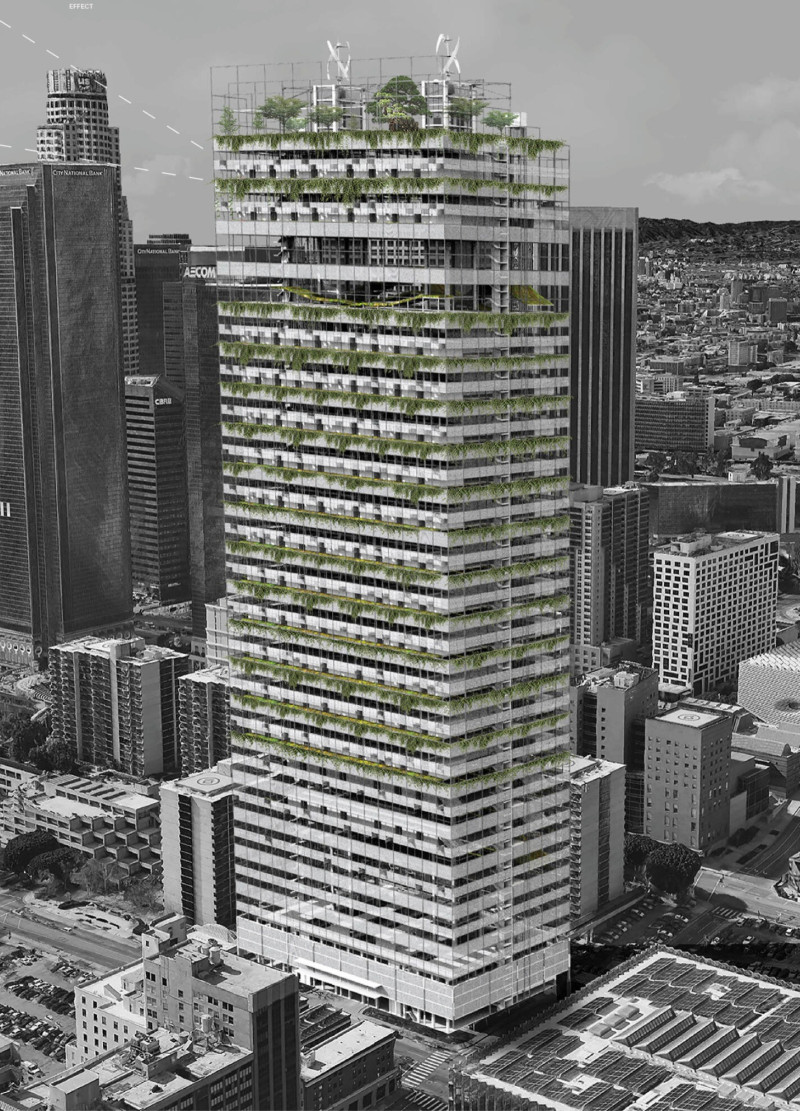5 key facts about this project
The primary function of Vertical Village is to provide a mix of residential units and communal spaces that promote social interaction while maintaining privacy. The design incorporates various living spaces, including studios, one-bedroom apartments, and communal facilities such as shared kitchens and gardens. By focusing on adaptability and flexibility, the project enables residents to personalize their living spaces according to their needs.
Efficient use of materials is one of the main distinguishing features of Vertical Village. The project predominantly features reinforced concrete and incorporates large glass panels that enhance natural lighting and offer views of the surrounding cityscape. Steel is utilized in structural elements to ensure stability, while living green façades contribute to improved air quality and aesthetic appeal. The project also employs advanced sustainability strategies, including natural ventilation systems and energy generation from renewable sources, to minimize environmental impact.
Community integration is another defining characteristic of the Vertical Village. The design encourages interaction through thoughtfully placed communal areas that serve as gathering spaces for residents. The use of horizontal terraces not only provides private outdoor spaces but also creates an opportunity for urban agriculture and green landscaping, enhancing the overall quality of life.
While many urban housing projects often focus solely on maximizing density, Vertical Village uniquely emphasizes community resilience by fostering connections among residents. This is achieved through the deliberate incorporation of shared amenities that facilitate social engagement, making the project more than just a collection of units.
For further insights into the architectural strategies and planning of Vertical Village, readers are encouraged to explore the detailed architectural plans, sections, designs, and innovative ideas presented. Understanding these elements offers a comprehensive view of how this project effectively addresses urban living challenges while prioritizing sustainability and community.























